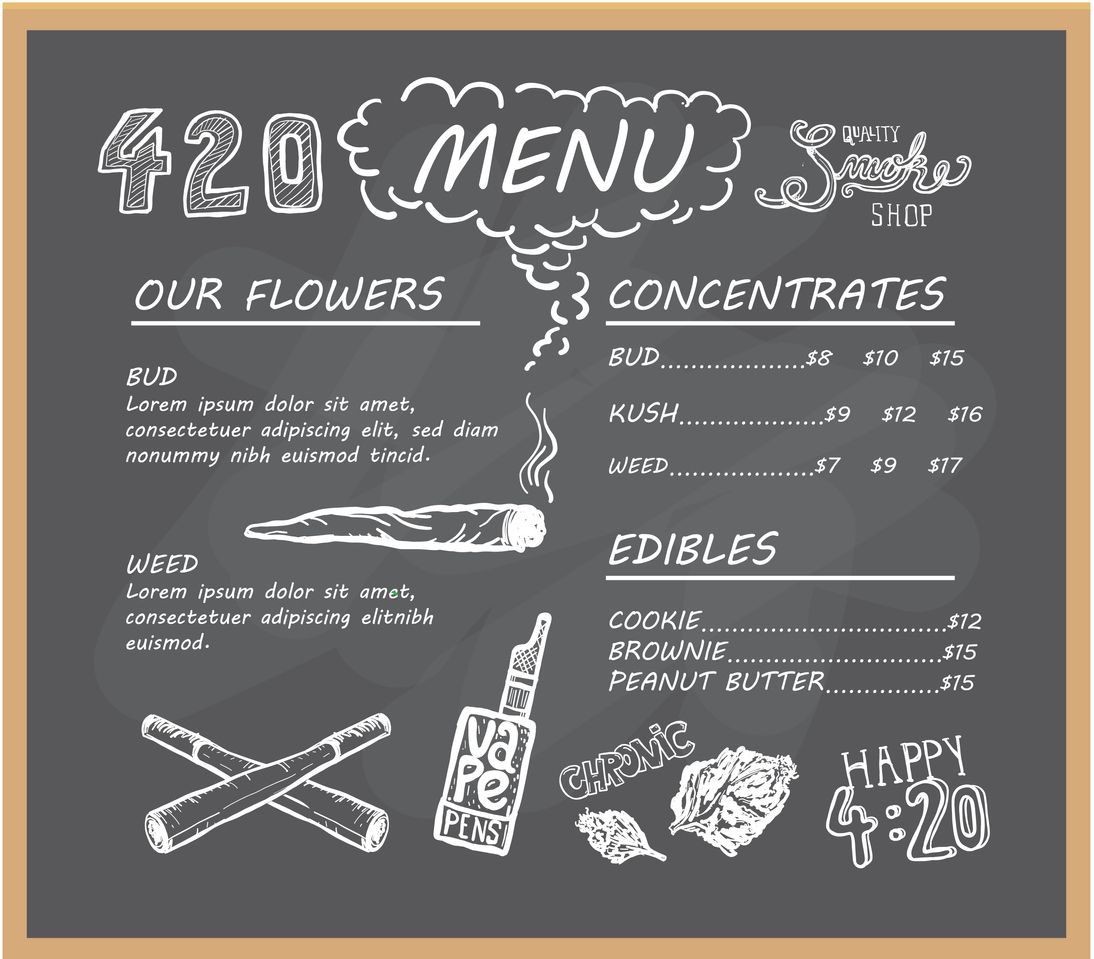Walking into a dispensary—or browsing one online—can feel overwhelming for many shoppers. Between strain names, potency percentages, terpene profiles, and various product types, it’s easy to get lost. But understanding how to read a dispensary menu is the key to choosing products confidently and safely.
Decoding Potency the Right Way
For inhaled products like flower, pre-rolls, or vapes, effects typically begin within minutes and fade after two to four hours. This makes it easier to “dose by feel,” starting with a puff or two and waiting before consuming more.
Edibles and drinks, on the other hand, can take anywhere from 30 to 120 minutes to kick in and may last much longer. Because of this delayed onset, it’s essential to start low and go slow—especially for new users.
In most states, a standard edible serving is between 5–10 mg of THC, with a total package limit of around 100 mg THC. Always check both the “mg per serving” and “mg per package” listed on the menu to stay within comfortable limits.
Understanding Cannabinoids and “Total THC”
THC is the main psychoactive compound in cannabis, while CBD can help balance or moderate its intensity. On menus, consumers will often see “Total THC” and “Total CBD” percentages, which represent the total potential after heating (known as decarboxylation).
Consumers should also be aware of the Certificate of Analysis (CoA), a lab report showing verified potency and safety results. Many dispensaries make these available upon request or link them via QR code on packaging.
Terpenes: More Than Just Aroma
Terpenes are the natural aromatic compounds that give cannabis its distinct scents—citrus, pine, floral, earthy, or diesel. They don’t just smell good; they may also play a role in shaping the overall experience.
Common terpenes include:
- Myrcene: Relaxing, musky, often found in indica strains.
- Limonene: Uplifting and citrusy, typical of sativa varieties.
- Caryophyllene: Peppery and grounding, with potential anti-inflammatory effects.
By noting which terpenes appear on menus, shoppers can start identifying what profiles they enjoy most.
Read More: The Hidden Power of Terpenes in Cannabis
Product Formats and How to Read Them
Flower / Pre-rolls: Look for cannabinoid percentages and, if available, terpene content. High THC doesn’t always mean better—it’s often the flavor and balance that determine quality.
Vapes: Dispensary menus often list “distillate” or “live resin.” Distillate vapes are refined and consistent, while live resin vapes preserve more natural compounds and tend to have richer aromas.
Concentrates (Dabs): Products labeled “live resin” or “live rosin” are extracted from fresh-frozen plants for higher flavor quality and potency. These are extremely strong, so only a small amount is needed.
Edibles & Drinks: Always check the mg THC per serving and per package. Because effects can take hours to appear, timing is key.
Tinctures: Measured in milligrams per dropper, tinctures can be taken under the tongue for faster absorption or mixed into food or drinks.
Topicals: These products are applied to the skin for localized relief and typically do not cause intoxication.
Purchase Limits and Equivalencies
Every state has rules for how much cannabis an adult can buy in one day. Menus may automatically calculate totals based on equivalency systems—for example, one ounce of flower might equal eight grams of concentrate or 800 mg THC in edibles. This helps consumers avoid exceeding state purchase limits when mixing product types.
Learn More: Cannabis Quantities Explained: Making Informed Purchasing Choices
Checking for Lab Results and Safety
A product’s Certificate of Analysis (CoA) ensures it was tested for potency and screened for contaminants like pesticides, heavy metals, and mold. A trustworthy dispensary should be transparent about these reports.
Consumers should make sure the CoA matches the product name and batch number and check for a clear “pass” on all safety panels.
The Golden Rule: Start Low, Go Slow
Because every product type affects the body differently, patience pays off. Inhaled products act fast; edibles and tinctures take longer. The safest approach is to begin with a small amount, wait for the full effect, and adjust next time.
It can help to keep a small journal or notes on preferred dosages, strain types, and terpene combinations that feel best. Over time, patterns emerge that make shopping more enjoyable and efficient.
Quick Menu Checklist
- Potency: Check total THC and CBD, not just percentages.
- Terpenes: Note your favorites for future reference.
- Serving Size: Understand mg per serving and per package.
- Product Type: Match onset and duration with your plans.
- Purchase Limits: Keep an eye on your cart totals.
- Lab Reports: Ask for or scan the CoA to confirm safety.

